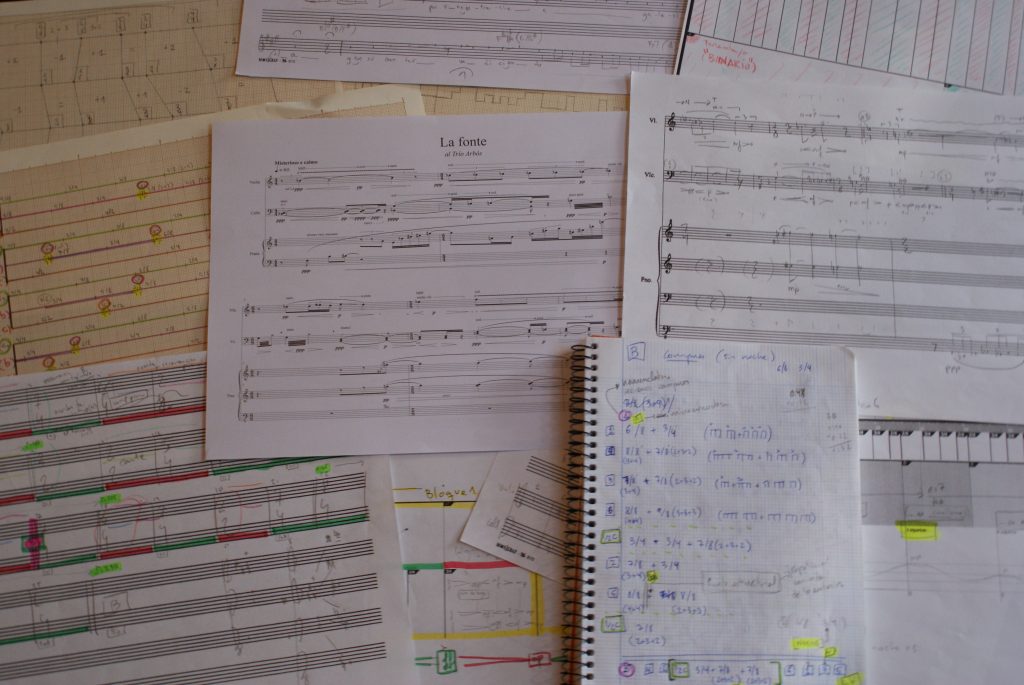For violin, cello and piano.14′
Commnissioned by Trío Arbós for Flamenco envisioned project
Premiere: Trío Arbós│IX Ciclo de Conciertos de Música Contemporánea Fundación BBVA Bilbao, November 2018
Work sopported by Departament de Cultura de la Generalitat de Catalunya
About the work:
Qué bien sé yo la fonte que mana y corre, aunque es de noche.
With these sonorous words, Enrique Morente opens his work Aunque es de noche based on the masterly poem by San Juan de la Cruz. In my own work, I wanted to start from both points (poetry and music), trying to merge intensely flamenco and mysticism, in a subjective musicalization of the poem.
La fonte, described by San Juan as eternal, hidden, without origin, alive …, takes form here in a musical continuum in which hides a complex structural framework that, pretending to flirt with the imitation of natural structures, uses concepts of the Theory of Chaos, fluid dynamics and fractal geometry. This hidden architecture is twinned, recovered and ornamented by the transformations of Morente’s melodic creation, always trying to maintain contact with flamenco singing. We will find, therefore, melodic turns, microtonal “ayeos” and “pellizcos” (musical elements of the flamenco style) that will evoke this art.
The mentioned continuum is structured into an introduction, followed by three movements interlaced by two transitions without a solution of continuity. Each of the movements evokes a different “palo” (style) of flamenco: Thus, the first one the “taranta”, the second the “bulería” and the third the “seguiriya”. Within this structure, in addition, reiterative interruptions appear that allude to the continuous repetition of the verse aunque es de noche, whose mission is to impregnate with a nightly atmosphere this fonte (fountain) that we present here.
Extract from the program note:
“Wishing to bring together mystic poetry by San Juan de la Cruz and flamenco, Rojo gives his work a structure whose formal architecture relies upon an introduction and three movements in which he respectively evokes three palos (‘flamenco styles’): taranta, bulería, and seguiriya. The subtle and stylized allusions follow each other without any solution of continuity, penetrated by microtonal melodic traces from the strings which recall the hurting song by Morente and confers a mysterious, nocturnal, and deeply personal atmosphere to the work in its deliberate repetitiveness.”
Juan Carlos Garvayo

